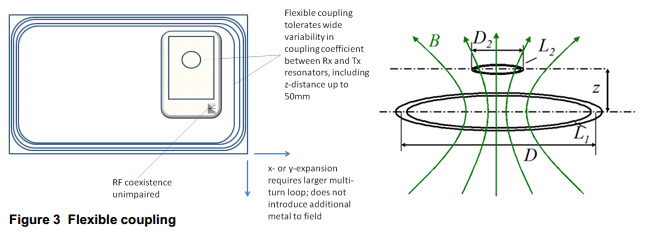Affiliate links on Android Authority may earn us a commission. Learn more.
Qi vs A4WP: War of the wireless charging standards
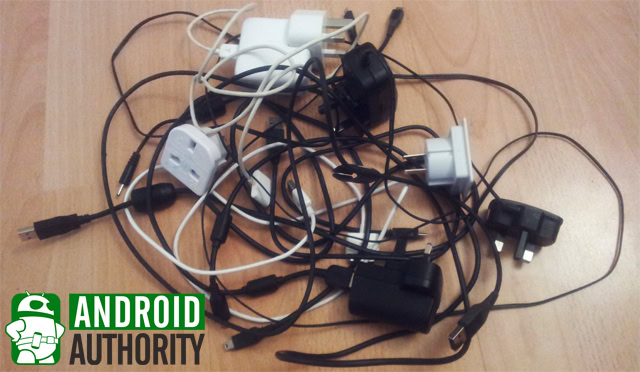
I’m in serious need of a wireless charging kit, I have draws full of endless USB cable variations for a variety of devices, some of which I admittedly don’t even use any more. Fortunately there are already a few companies working to implement wireless technologies into future products, but the reason that we haven’t seen wider adoption already is most likely due to the fact that the industry still hasn’t decided on the best technology to use.
You might not much hear about it, but there’s a battle waging between the Wireless Power Consortium (WPC), which owns the Qi standard, and its latest rival the Alliance for Wireless Power (A4WP), which was finalized in January. The battle is being fought over which will become the global standard for wireless power transfer technology.
WPC is by far the largest group at the moment, with 137 member organizations in 15 different countries and over 100 products already certified with the Qi standard. But major wireless technology companies Qualcomm, Samsung, and Texas Instruments, as well a few others, have made the switch and have formed the alternative A4WP standard.
However, it’s worth noting that Samsung and TI are both still members of WPC, but that they are also investing research into A4WP in the belief that it’s the superior technology for the future.
In order to better understand why the industry is currently so torn on wireless charging standards, it might help to take a look at various design considerations chosen by each group and how this will impact consumers. So let’s take a little look at the physics and electronics behind wireless charging, and don’t worry no BEng degree will be required.
How wireless charging works
All wireless charging products are based on the principle of magnetic induction, which is created from the manipulation of electromagnetic fields produced by electrons moving within a wire.
Electromagnetic fields radiate at a perpendicular angle from a wire, they are usually pretty weak in a straight wire and become weaker as the distance from the source increases. However manipulating a wire into certain shapes, such as a coiled solenoid, can greatly increase the strength of the magnetic fields, also known as an inductor. The most concentrated magnetic field is generated by a loop of wire with numerous turns, where larger loop areas and a great number of windings compounding the strength of the field.
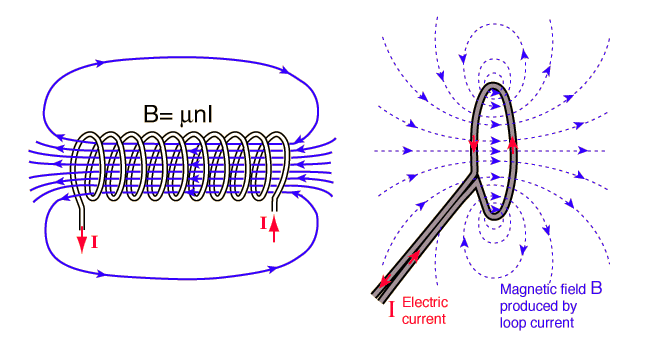
Those familiar with electronics will probably have come across transformers, which use coils of wire and a core to step voltage and current up and down. Well with some additional tweaking the magnetic fields produced by these wire coils can even become strong enough to induce current in a wire across the air. I’m sure some of you will also have heard of resonance, be it from acoustics, music, radio, or any other subject involving waveforms. Circuits can also be tuned to become very sensitive to specific frequencies via the use of inductor and capacitor circuits. For use in wireless technologies this increases the device’s sensitivity to signals on a specific frequency, whereby even a weak tuned signal starts a charging and discharging reaction in the receiver, resulting in a current.
This vastly improves the connectivity between the source and receiver, allowing for power to be transferred over several inches rather than just a few millimeters.
Building a wireless charger
So that’s the basic physics out of the way, but how do companies put this principle into practice? It’s actually quite a simple premise; a strong current is induced in a coil inductor which generates a magnetic field. The current generating this magnetic field is finely tuned to a specific AC frequency using an LC circuit, in order to achieve the strongest possible transfer to the receiver which is tuned to the same frequency.
The only real choice designers have to make is how best to build the inductive circuits, how to finely balance the power requirements of the receiving device, what frequency to transmit on, and how to optimize charge times and power consumption. But that’s definitely outside the scope of this article. One of the big questions facing a designer is how large to make their inductor, and how to balance the trade off between power efficiency, magnetic field strength, and resonant frequency.
And this is really where the battle for wireless charging comes in, between the small and efficient Qi design vs a larger more powerful A4WP standard.
Qi – magnetic induction charging
I’m sure many of you are familiar with the Qi standard for wireless charging, devices like the Nokia Lumia 920 already use it and the Galaxy S4 is the latest flagship smartphone to come with the technology pre-installed.
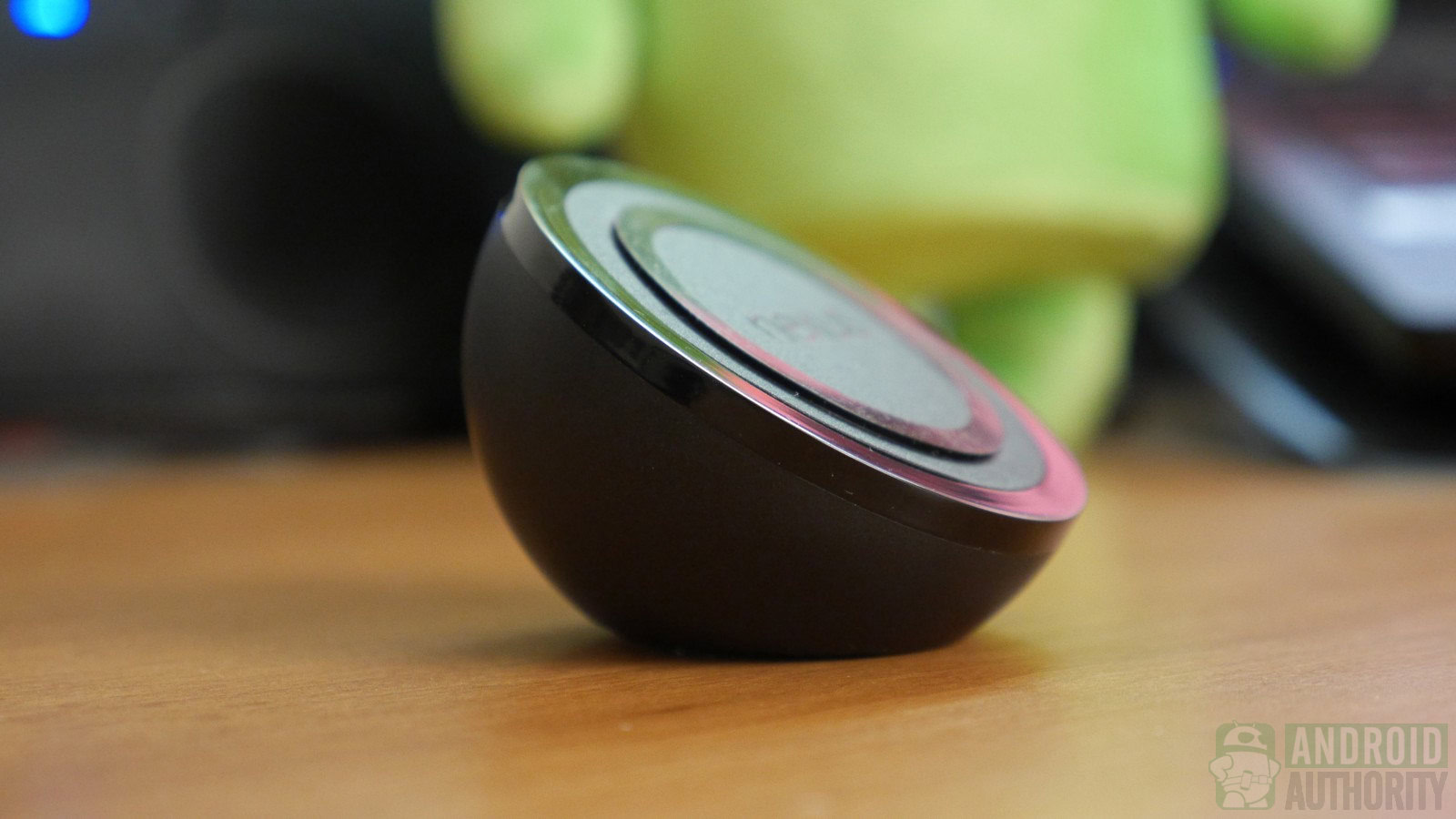
The small inductors used in the Qi standard makes it easy to transfer power over higher frequencies, but the lack of a large magnetic field means that your handset has to be placed quite specifically on the dock. The Qi standard only supports a charging distance of a few centimeters at most. A clever use of magnets can help to keep your smartphone in place, but it can be a hassle if you want to use different devices on a single charger or if you need to charge more than one device at a time.
In order to address the problem of only being able to charge over a small area, Qi compliant components can, and do, use multiple tightly couple resonator arrays in order to create a larger charging area. However it obviously consumes a lot more power to have the entire matrix of individual coils switched on, and this still doesn’t solve the problem whereby users have to line-up their devices precisely with the small magnetic fields in order to achieve a strong enough connection.
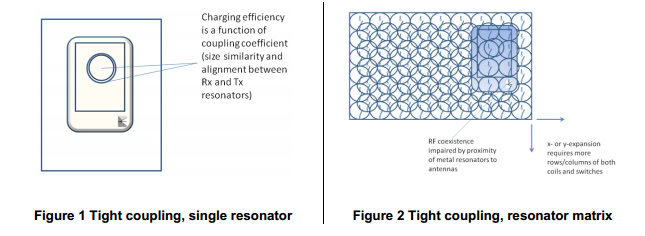
In order to limit the power consumed by multiple coils, the Qi standard also incorporates a limited communication protocol. This allows the receiving device to tell the charger how much power it requires, and communicate when it is fully charged. The charger can adjust power output to suit the specification of the connected device and can switch to a low power mode when it’s fully charged the handset.
Another complaint about Qi charging is that it can sometimes heat up the back of a device, due to the operating frequency heating conductive materials like metal.
Overall it can be said that Qi is a conservative implementation of wireless charging, aimed at being power efficient but not necessarily the most flexible when it comes to practical uses.
A4WP – magnetic resonance charging
A4WP intends to take wireless charging in a slightly different direction, by utilizing a much larger magnetic field. Rather than a 1 (or many) to 1 sender to receiver ratio, A4WP opts for a 1 to many design which allows it to charge multiple devices from a single transmitter.
Rather than the small precise inductor coils used in the Qi standard, A4WP opts for a larger and more powerful electromagnetic field generated from a much larger coil. This accomplishes a much larger charging distance by using a finely tuned resonance circuit to educe a current in the receiving device, which is known as a flexible charger. There’s a little bit of economical marketing terminology going on here when A4WP talks about magnetic resonance. A4WP’s standard isn’t using an entirely different method for providing wireless power, it’s still based on magnetic induction but is utilizing the theory in a slightly different way.
This means that devices placed within the inductor ring can be charged without having to line-up perfectly with the coil. A4WP also allows for additional Z axis charging placement, potentially allowing for chargers to be built deeper into other objects, like a desk for example, whilst still allowing the electromagnetic fields to permeate the material.
Below is an example of large resonance charging box made by Power by Proxi. This isn’t using the A4WP standard, but it is based on the same principle.
Just as with Qi, A4WP also communicates between the charger and the receiving device, allowing for a more optimal allocation of power based on the number of devices connected and their individual power requirements.
A4WP seems infinitely more practical when it comes to charging your various home devices. Simply dropping a device down on a larger mat next to any other number of smartphones or tablets is just easier than lining up individual docks or using a less efficient multi-inductor charging mat. It also means that devices of different shapes and depths will be compatible with A4WP charging stations.
The drawback for A4WP is that the supplied wattage to charging devices decreases if the supply is not large enough, as the power has to be shared. For example if you have a 10W A4WP supply but need to charge three 5W devices, then each one will not receive sufficient power to charge at full speed. The real questions for A4WP will be how quickly it can charge devices, and whether it’s efficient enough for consumers to use on a daily basis.
Who’s going to win?
As A4WP devices aren’t on the market yet we’ll have to wait before we can accurately judge important aspects like charging efficiency, idle power consumption, and so on. So I’ll reserve final judgement until we can run some tests.
But we can definitely consider the practical applications of the two different technologies. For use in the home there’s very little to chose between the two. Device compatibility and efficiency are probably the most important things when it comes to users, although the ability to build charging boxes into desks with A4WP might be a slight advantage in the longer term.
There are also plans circulating to use wireless charging in commercial situations, for example being able to charge your smartphone in a café in exchange for receiving an advertisement via the chargers communication protocol. With Qi charging users will most likely have to dock their phone at a station in the store, where as A4WP offers the opportunity for consumers to simply put their smartphone on the counter to charge, which is instantly more practical and consumer friendly.

But I suppose what will most likely decide the fate of these two standards, as will most technological battle, will be adoption rates. Currently Qi is miles ahead when it comes to company memberships and the number of devices in development which use the standard. However, as already stated, big players like Qualcomm, Samsung, and Texas Instruments are backing the A4WP as the standard. A Samsung spokesperson had this to say about the A4WP standards:
“From Samsung’s standpoint, with as many phones as we sell, we can increase [adoption] of the standard and really create an ecosystem for wireless power … and create interoperability across the industry,”
This statement pretty much hits the nail on the head, with some of the largest tech companies in the smartphone business backing A4WP you can be sure that the standard will end up in many high end products that consumers are actually going to buy.
But like all technologies it’s going to take a while for the market to adopt a new standard. The decision by Samsung to opt for Qi in the Galaxy S4 is a blow to A4WP, but perhaps devices which are set to ship next year will help improve awareness of the A4WP standard. A4WP still has to win over other companies with either superior technology or better band awareness, and for that reason I expect that Qi will remain the dominant standard for a while longer.
I suppose there are two ways you can look at this, either a little competition is great for the market and time will tell which is the superior technology. Or alternatively another standard will simply fragment a market which is already struggling to win over consumers as it. The lack of compatibility between the two is something which will certainly hurt consumers who have already bought into Qi.
I personally prefer the technological ideas behind A4WP, but I’m not sure that the technology can catch up sufficiently to Qi in order to become the accepted standard, at least not any time soon. But I’d watch this space for A4WP once the products finally start shipping out.
